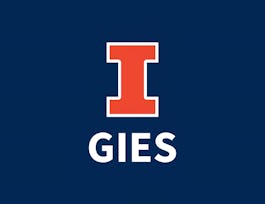In the final course of this certificate, you will apply your skills towards financial statement analysis. If you have the foundational concepts of accounting under your belt, you are ready to put them into action in this course. Here, you will learn how to reconcile different types of accounts, check for accuracy, and troubleshoot errors. Additionally, you will practice how to apply different analytical methods to key financial statements and understand how these methods inform a variety of business decisions.


Financial Statement Analysis
This course is part of Intuit Academy Bookkeeping Professional Certificate
Taught in English
Some content may not be translated

Instructor: Intuit Academy Team
33,648 already enrolled
Included with 
Course
(443 reviews)
82%
Recommended experience
What you'll learn
Describe and illustrate the use of a bank reconciliation in controlling cash.
Outline the purpose of financial statements in relationship to decision making.
Describe basic financial statement analytical methods.
Apply quantitative skills to analyze business health.
Skills you'll gain
Details to know

Add to your LinkedIn profile
17 quizzes
Course
(443 reviews)
82%
Recommended experience
See how employees at top companies are mastering in-demand skills

Build your Business Essentials expertise
- Learn new concepts from industry experts
- Gain a foundational understanding of a subject or tool
- Develop job-relevant skills with hands-on projects
- Earn a shareable career certificate from Intuit


Earn a career certificate
Add this credential to your LinkedIn profile, resume, or CV
Share it on social media and in your performance review

There are 4 modules in this course
In this module, you will be introduced to different liabilities and learn how to account for them. Additionally, you will learn how to work with the sales tax payable accounts.
What's included
25 videos1 reading4 quizzes2 discussion prompts8 plugins
In this module, you will gain an understanding and apply knowledge of accounting for sales tax and payroll liabilities.
What's included
18 videos4 quizzes2 discussion prompts10 plugins
In this module, you will learn how to work with different types of long-term liabilities and shareholders equity.
What's included
19 videos5 quizzes5 discussion prompts10 plugins
In this final module for Course 4, you will apply your bookkeeping knowledge by working through common accounting scenarios that deal with liabilities, payroll, and equity.
What's included
16 videos2 readings4 quizzes2 discussion prompts11 plugins
Instructor

Offered by
Recommended if you're interested in Business Essentials

Intuit

University of Illinois at Urbana-Champaign
Why people choose Coursera for their career




Learner reviews
Showing 3 of 443
443 reviews
- 5 stars
74.72%
- 4 stars
14.54%
- 3 stars
5.59%
- 2 stars
2.46%
- 1 star
2.68%
New to Business Essentials? Start here.

Open new doors with Coursera Plus
Unlimited access to 7,000+ world-class courses, hands-on projects, and job-ready certificate programs - all included in your subscription
Advance your career with an online degree
Earn a degree from world-class universities - 100% online
Join over 3,400 global companies that choose Coursera for Business
Upskill your employees to excel in the digital economy
Frequently asked questions
Access to lectures and assignments depends on your type of enrollment. If you take a course in audit mode, you will be able to see most course materials for free. To access graded assignments and to earn a Certificate, you will need to purchase the Certificate experience, during or after your audit. If you don't see the audit option:
The course may not offer an audit option. You can try a Free Trial instead, or apply for Financial Aid.
The course may offer 'Full Course, No Certificate' instead. This option lets you see all course materials, submit required assessments, and get a final grade. This also means that you will not be able to purchase a Certificate experience.
When you enroll in the course, you get access to all of the courses in the Certificate, and you earn a certificate when you complete the work. Your electronic Certificate will be added to your Accomplishments page - from there, you can print your Certificate or add it to your LinkedIn profile. If you only want to read and view the course content, you can audit the course for free.
If you subscribed, you get a 7-day free trial during which you can cancel at no penalty. After that, we don’t give refunds, but you can cancel your subscription at any time. See our full refund policy.



